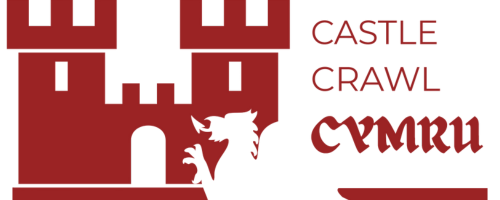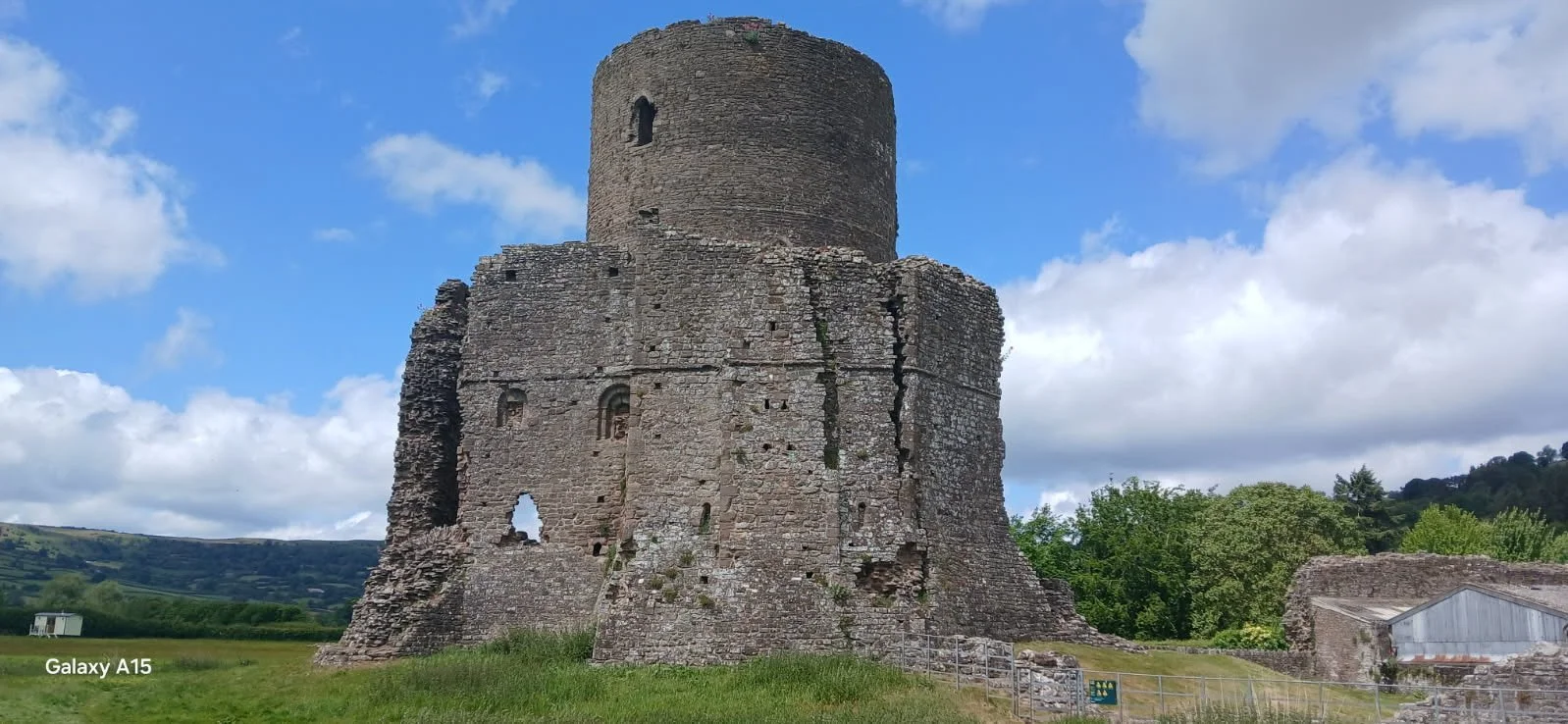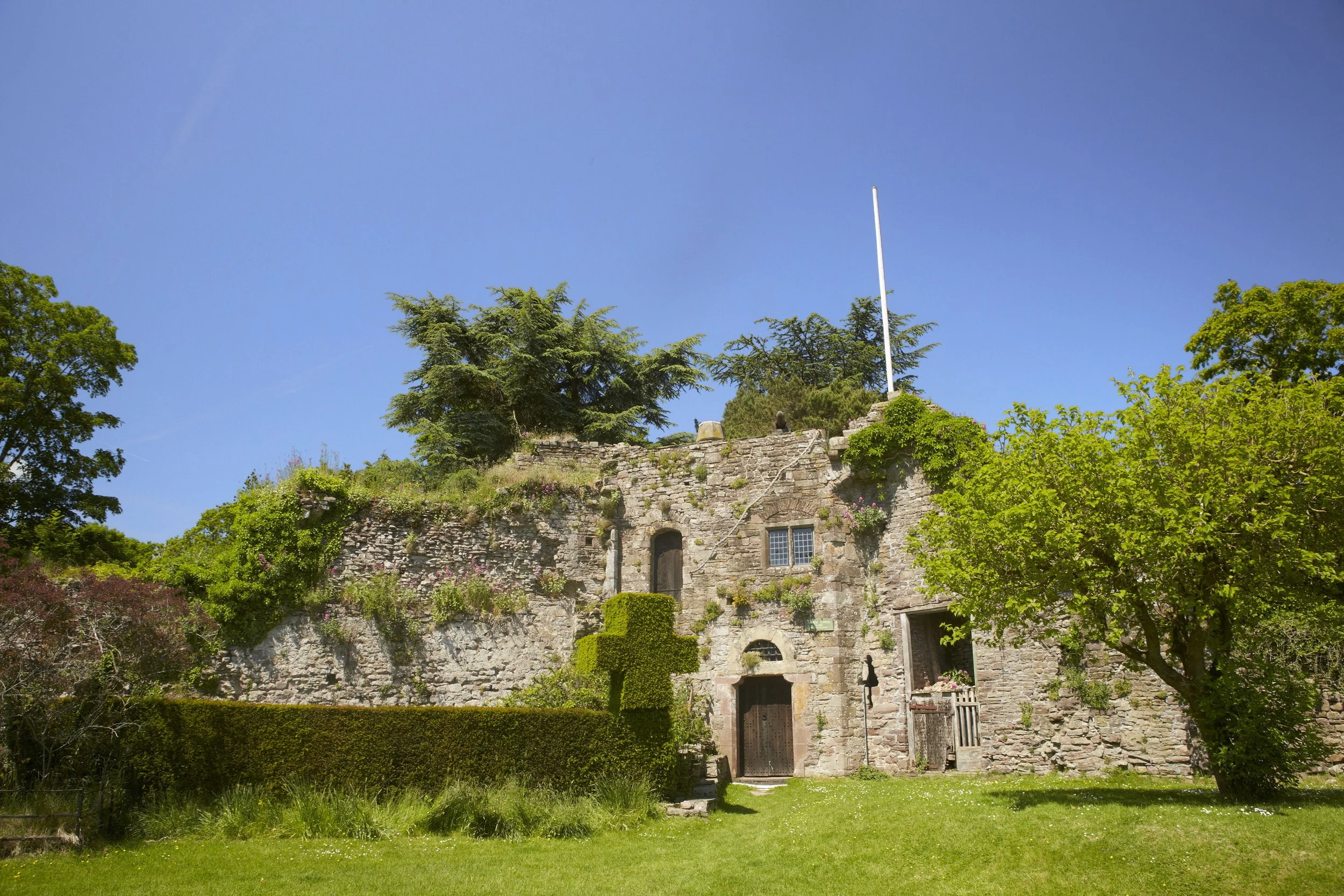Tretower Court and Castle | Visit Welsh Castles
Tretower Court and Castle sit in the Usk Valley at the edge of the Black Mountains in Powys. The site includes a ruined Norman castle and a well-preserved medieval manor house. Together, they show how architecture in Wales changed from military stronghold to domestic residence.
The castle began as a motte-and-bailey in the early 1100s. Over time, stone fortifications replaced the timber structure. By the 14th century, the nearby court house had become the main residence. Wealthy gentry lived here, using the site to show their status and manage their estates.
Today, Tretower offers a rare chance to explore both a medieval fortress and a high-status house on the same site. The buildings are managed by Cadw and are open to the public.
Quick Facts
Date of construction: Late 11th or early 12th century (castle); early 14th century (court)
Location: Tretower, Powys, near Crickhowell in South Wales
Who built it: Originally built by Picard, a Norman knight
Key purpose: Defensive stronghold later replaced by a manor house for elite Welsh gentry
A Brief History
The first castle at Tretower was likely built in the late 11th or early 12th century by Picard, a Norman follower of Bernard de Neufmarché. It began as a timber motte-and-bailey structure. By the mid-12th century, it was rebuilt in stone with a circular shell keep. A tall round tower was added around 1230 to improve defences and living space.
By the early 14th century, the castle had become less important. The owners, the Vaughan family, shifted their focus to building a more comfortable residence nearby. This became Tretower Court.
Tretower Court was expanded in stages through the 14th and 15th centuries. It was designed to reflect the growing power of the Vaughans, who were wealthy landowners and patrons of the arts. Sir Roger Vaughan, a key figure in the Wars of the Roses, lived here and fought at the Battle of Agincourt in 1415.
By the 1700s, the court had fallen into decline. It was used as a farmhouse until the 20th century. The castle, already in ruins, remained a local landmark.
Both the court and castle were placed under state care in the 20th century. They are now managed by Cadw and open to the public.
Features and Layout
Tretower Court and Castle share the same grounds but have distinct layouts. The castle, now a ruin, stands slightly uphill from the later court. It includes a circular stone shell keep, a large round tower, and parts of the curtain wall.
The shell keep is the oldest surviving feature, built on a raised motte. It once held timber buildings inside. The tall round tower, added in the 13th century, offered stronger defence and private chambers. Its walls are thick, and you can still trace the remains of arrow slits and fireplaces.
Tretower Court lies just south of the castle. It’s a fine example of a late medieval manor. The building has a timber-framed hall, a great chamber, and a range of service rooms. A courtyard lies at the centre, enclosed on all sides.
Much of the court has been restored to show how it may have looked around 1470. Painted walls, wooden furniture, and reconstructed hearths help bring the rooms to life. You can walk through the great hall, parlour, and buttery. A first-floor solar gives views of the courtyard below.
Outside, you’ll find herb gardens and a small orchard laid out using evidence from medieval records. These outdoor spaces reflect the site's shift from fortress to residence.
Images



Legends and Stories
Tretower does not have the same wealth of ghost tales as some other Welsh castles, but a few stories still linger.
One local legend tells of a ghostly white lady seen near the old tower. She is said to walk the grounds at dusk, sometimes looking towards the hills. Some believe she may be linked to a noblewoman who lived here in the medieval period, possibly waiting for a husband who never returned from war.
Another story connects the site to Sir Roger Vaughan. He fought at Agincourt in 1415 alongside his father-in-law, Dafydd Gam, and was killed in battle. Visitors sometimes report the faint sound of horses or distant voices near the ruins, especially after dark.
While the court itself feels more domestic, the castle ruins carry an older, heavier atmosphere. These stories add to the sense of time layered across the site, even if they remain part of local folklore.
Visiting
Opening Times
Tretower Court and Castle are open daily from 10:00 to 17:00. Last entry is 30 minutes before closing. Opening hours may vary during winter, so it’s best to check Cadw’s website before your visit.
Ticket Prices
Adults: £8.30
Seniors (65+) and students: £6.00
Children (5–17): £5.80
Under 5s: Free
Family (2 adults + up to 3 children): £27.40
Cadw members and some other pass holders can enter free.
Directions and Transport
The site is in the village of Tretower, just off the A40 near Crickhowell. If you're driving, use postcode NP8 1RF for sat nav. There is a small car park on site.
Public transport is limited. The nearest railway station is Abergavenny (about 10 miles away). Buses run between Abergavenny and Crickhowell, with some services stopping near Tretower.
Facilities and Accessibility
Toilets are available, including an accessible toilet. The court has level access on the ground floor, but upper floors are reached by stairs. The castle ruins involve uneven ground and steps.
There is no café on site, but refreshments are available in nearby towns. Picnic areas are available.
Dog Policy
Dogs on leads are allowed in the grounds but not inside the buildings. Assistance dogs are welcome throughout.
Nearby Attractions
Crickhowell
This small market town is just two miles away. It has independent shops, cafés, and riverside walks. The 18th-century Crickhowell Bridge crosses the River Usk and is still in use.
Abergavenny Castle and Museum
Roughly 20 minutes by car, Abergavenny offers another Norman castle site with a small museum. It gives a good overview of local history and medieval life.
Sugar Loaf Mountain
Part of the Black Mountains, Sugar Loaf is a popular hill walk. From the summit, you get wide views across the Usk Valley. The walk begins near Abergavenny and takes 2–3 hours round trip.
Llangattock Escarpment
Close to Tretower, this limestone ridge offers good walking and views. There are caves, quarries, and open grassland popular with walkers and climbers.
Blaenavon Ironworks (UNESCO World Heritage Site)
About 30–40 minutes away, Blaenavon tells the story of Wales’s industrial past. The site includes preserved furnaces and workers’ cottages. Entry is free.
Visitor Tips
Wear sturdy shoes. The castle ruins have uneven surfaces, and parts of the court have stone floors or narrow stairs.
Check the weather. Most of the site is outdoors, and there is limited shelter in wet conditions.
Bring water and snacks. There is no café on site, and the nearest shops are in Crickhowell.
Photography is allowed. You can take photos for personal use in both the court and castle.
Arrive early in peak season. The car park is small, and summer weekends can be busy.
Use layers. The court can feel cool inside, even in warmer weather.
Allow 1.5 to 2 hours to explore the whole site at a relaxed pace.
FAQs
-
Yes. Dogs on leads are welcome in the grounds. Only assistance dogs are allowed inside the buildings.
-
The court has level access on the ground floor. Some areas are uneven, and upper floors require stairs. The castle ruins involve rough ground and are not fully accessible.
-
Most visitors spend 1.5 to 2 hours. You can explore at your own pace and take in both the castle and the court.
-
No. There is no café or shop at Tretower. You’ll find food and drink options in nearby Crickhowell or Abergavenny.
-
No. You can buy tickets on arrival. Booking online through Cadw is optional but can save time in peak season.
-
Yes. Photography for personal use is allowed throughout the site.
Wrapping it Up
Tretower Court and Castle offer a clear look at how life in Wales changed from military defence to comfortable estate living. You can explore over 800 years of history in one visit. The mix of ruined stonework and restored timber halls makes this a unique stop in the Brecon Beacons area.
It’s easy to reach from Crickhowell or Abergavenny. Allow a couple of hours, wear sensible shoes, and check ahead for seasonal opening times. The site works well as part of a longer day out in the Usk Valley.




Cardiff Castle is a medieval and Victorian-era site in the centre of Cardiff, the capital of Wales.